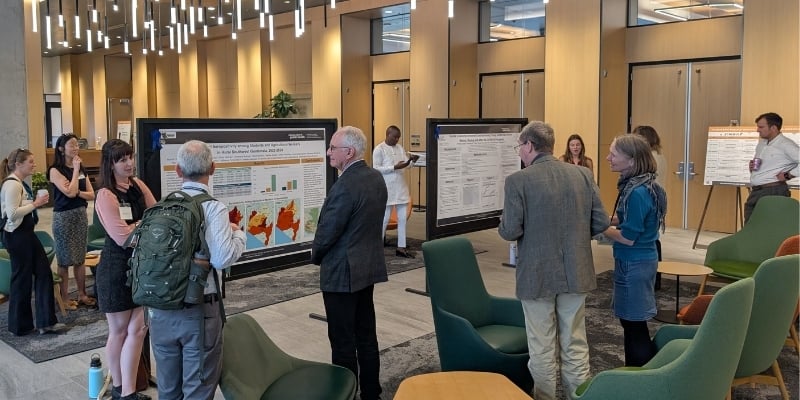A new paper in eLife Sciences explores the importance of using advanced genomic sequencing as a powerful tool to control schistosomiasis, the world’s second-leading parasitic disease.
At the University of Colorado Anschutz Medical Campus, Drs. Elizabeth Carlton and Andrea Lund in the Department of Environmental & Occupational Health at the Colorado School of Public Health contributed to the study, along with Dr. David Pollock of the Department of Biochemistry & Molecular Genetics at the University of Colorado School of Medicine.
The article, “Integrating genomic and epidemiological data to accelerate progress toward schistosomiasis elimination,” notes that despite a global effort to control this neglected tropical disease (NTD), approximately 200 million people are infected, most of them in agricultural communities in Africa, Asia, and South America. In fact, the disease has emerged in some areas and persists in other regions for reasons that are not well understood.
Schistosomiasis is a “poverty-trap disease” that decreases people’s ability to learn and work, and can lead to malnutrition, anemia and organ damage. It can also cause bladder cancer and increase the risk of acquiring human immunodeficiency virus. “It is a disease that reduces the quality of life for millions of people worldwide,” Carlton said.
Using genetics to answer questions about neglected tropical diseases
The authors maintain that advances in genomics, such as whole-genome sequencing, can now be used to understand why schistosomiasis is able to persist in “disease hotspots” despite control efforts. For example, whole-genome sequencing – i.e., laboratory analysis of an organism’s complete genetic makeup – can play a crucial role in identifying sources of infection. It can also help shed light on how the disease is evolving. This information can then be used to design interventions to thwart disease spread.
The paper examines two “priority questions” that can be addressed using genomic information and integrated into ecological and epidemiological studies. First, how often do non-human hosts – cattle and rodents, for instance – contribute to schistosomiasis in humans? Animals have long contributed to schistosomiasis in Asia. There is growing recognition that they may also be contributing to schistosomiasis in Africa as well. Second, to what extent are infections being “imported” from outside the community and driving disease transmission? Genomic analysis can help us understand where people are acquiring infections and whether, as humans and animals move, they transport infections across their travel networks.
First author, Lund, explained “Genomic surveillance is common for viruses and bacteria. It’s harder for parasites like schistosomes – the organisms that cause schistosomiasis – because genomes are large, more expensive to sequence, and challenging to analyze.”
Importance of whole-genome sequencing builds
The team wrote this paper because the cost of whole-genome sequencing has decreased, opening the possibility of using the technologic to improve schistosomiasis surveillance. Carlton called whole-genome sequencing “21st century science for a 21st century problem.” She added that the technique, “combined with thoughtful epidemiology and ecology can really help to change the game.”
Lund stressed that a strength of the new paper is that it combines research and literature from several different disciplines, including epidemiology, ecology and genetics. She stressed that multi-disciplinary approaches are key to developing a coordinated response to a complex and pervasive public health problem like schistosomiasis.
“One thing that is unique about this paper is that it brings together research from different disciplines in a way that isn’t done very often,” she said. “People talk about ecology being important and epidemiology and genetics being invaluable tools, but bridging those sections is challenging, as is making sure that the vocabulary we are using is common across all those fields.”
After reviewing hundreds of studies that used genetic, epidemiology and/or ecological methods to study schistosomiasis, the authors conclude that whole-genome sequencing “opens new opportunities to address questions related to the epidemiology, treatment, and control of schistosomes.” The reason, Pollock explains, is that whole-genome sequencing reveals details about the “relatedness” of parasite samples with far greater precision than other methods, such as microsatellites (MSATs) – short pieces of DNA with repeated genetic patterns.
Carlton noted that the big advantage of whole-genome sequencing is that it is replicable across laboratories, a key to scientists building a common understanding of the parasite’s genetic structure. “We can readily combine the data across laboratories. This allows for the creation of valuable data repositories, which can accelerate our scientific understanding of this neglected tropical disease” she said.






